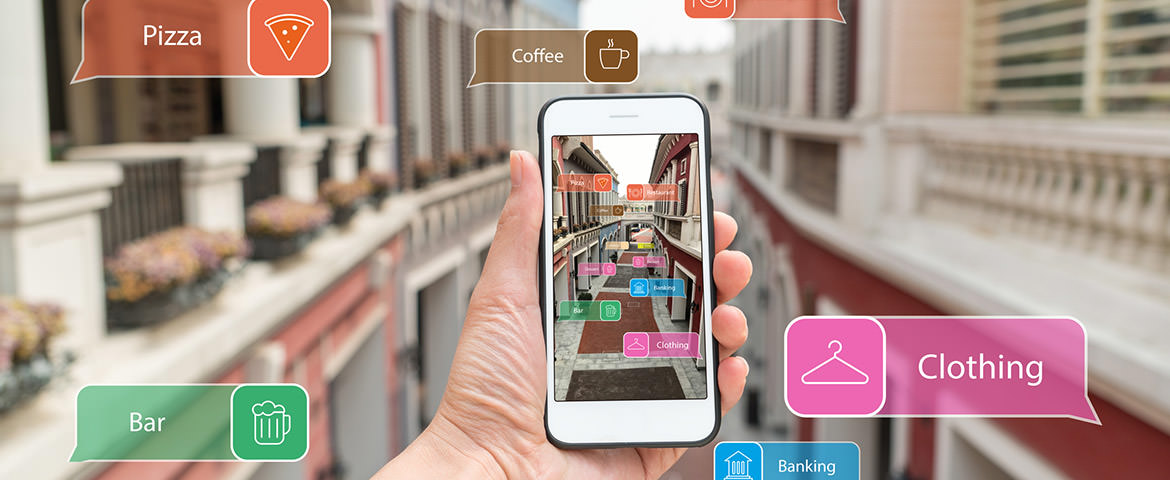Today mobile devices have become our “first screen”. We take our phones everywhere, all the time, and according to a Deloitte study, we check them between 25 and 50 times a day. Content has been adapted to these devices and vertical video, once considered a faux pas, is now the norm.
The logical consequence is that advertisers have also adapted to this new reality. Mobile advertising has learned from its past mistakes on the big screen. It is more respectful, more personal, and more importantly, integrated into the content shared online. Here is an overview of mobile advertising.
Banners on Mobile Advertising
This is a classic and relatively conventional advertising format. It works well and can be integrated into any type of content. Whether on a mobile website, a web app or a freemium application. The banners display rotating ads based on user interest and/or geographic location. Easy to create and inexpensive, this type of advertising is often found in a CPM model. It aimed at building the image and awareness of a brand. Most of the time this advertising format results in RTB (Real-Time Bidding) exchanges, thanks to programmatic marketing.
Native advertising
This type of advertising emerged in 2012-2013 when content marketing was becoming increasingly important. Drawing its inspiration from journalistic and editing codes, it conveys information of an editorial nature through informative content. The specific nature of native advertising requires it to follow the natural form and function of the site in which it appears. In this sense, it is less intrusive, more personal and does not interrupt the natural flow of reading for its users.
Traditional video advertising
Video ads, which are six to thirty seconds long, have found a new creative platform on social media, which considers the video to be a powerful platform for social engagement. The viewer can elect to skip the ad after a few seconds, or may be required to view it in its entirety. For example, YouTube offers numerous video advertising options to complement a global marketing plan. Video advertising can, therefore, be incorporated before, during or after the content. It is an excellent tool for announcing a promotional offer or building brand awareness.
Virtual reality video advertising
Based on the same principle as traditional video advertising, it is activated when a user accesses virtual reality content. This could be used with YouTube, Facebook or any other platform or app specifically designed to broadcast virtual reality. Mobile virtual reality video is extremely immersive and can even interact with the user, creating a nearly limitless field of storytelling.
Interstitial ads
This is an advertising style that lived its glory days on the computer. An interstitial ad is a separate window that covers the content of the site you wish to access. Intrusive and despised, it was probably one of the many reasons that led internet users to employ ad blockers. It is also found on mobile devices and Google recently decided to limit its use by downgrading the sites which display these ads on the first page that a user is visiting. However, it is a very powerful display format if delivered sparingly. It should not cover the full screen of the mobile device and should only be displayed after the mobile user has seen several pages from the same site.
Rich Media
On mobile apps, particularly those featuring current events, rich media ads are integrated between or within the content. These ads are interactive and encourage viewers to engage with the content by completing an action like virtually “scratching” a game ticket, pressing buttons, or uncovering a part of the screen. Rich media ads can also include videos and animation. They are often very well-designed, fun and represent a good example of effective advertising, creating a physical connection with the user.
Augmented advertising
Augmented advertising is still very much in its infancy, but it has a promising future as a format specifically designed for augmented reality. The principle is to integrate an interactive ad within the user’s environment in real time. The idea is not to read an ad passively, but rather to actively engage and “play” with it.
Advertising has a very important role in the digital ecosystem. It finances projects, builds brand awareness and contributes to promoting an initiative or a special offer. Because we take our mobile devices with us everywhere, mobile advertising is always our fingertips and represents an excellent marketing tool that should not be underestimated.
 SKALE
SKALE  Join Kwanko
Join Kwanko  Program Directory
Program Directory  Who is Kwanko
Who is Kwanko  History
History  Careers
Careers  Kwanko Academy
Kwanko Academy  News
News  Case Studies
Case Studies  Strategy and commitment
Strategy and commitment  Social Responsability
Social Responsability  Gender Equality
Gender Equality  Our Environmental Charter
Our Environmental Charter  Our Ethical Charter
Our Ethical Charter  Our responsible purchasing policy
Our responsible purchasing policy  Certifications and Publications
Certifications and Publications 


 Publishers
Publishers Advertisers
Advertisers Our Solutions
Our Solutions  About Us
About Us  Academy
Academy 














